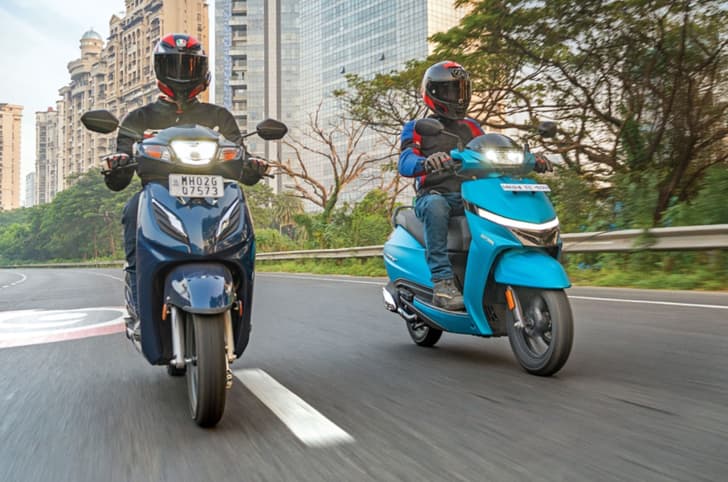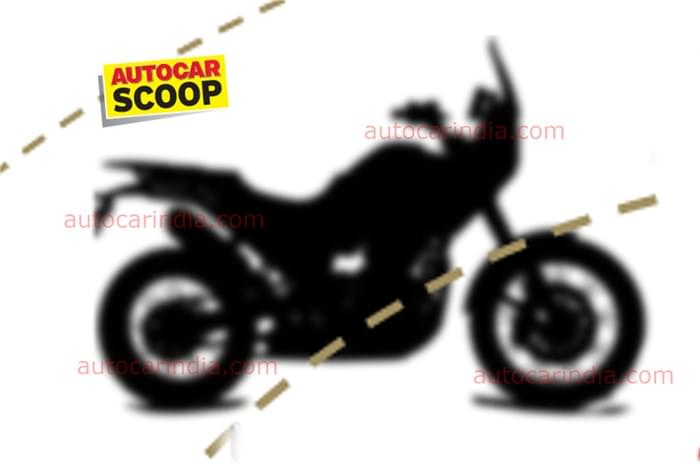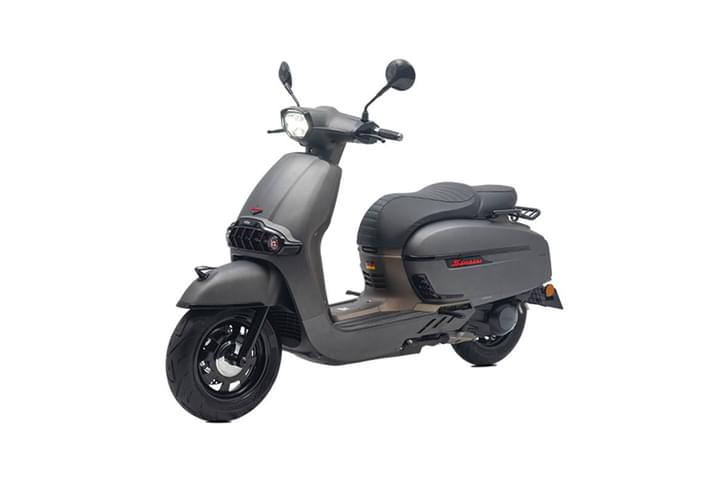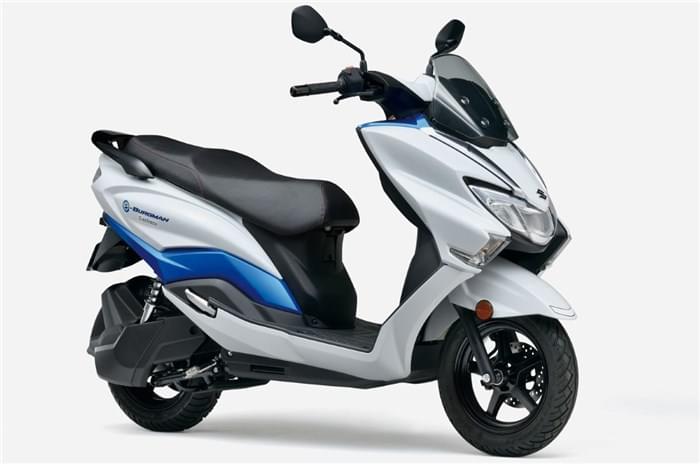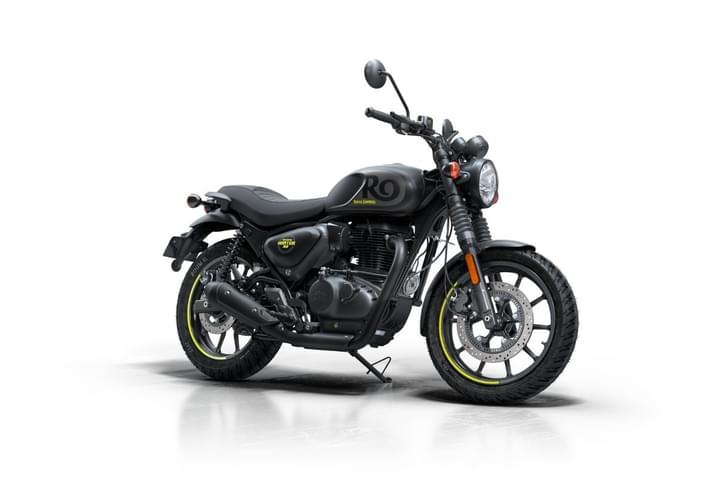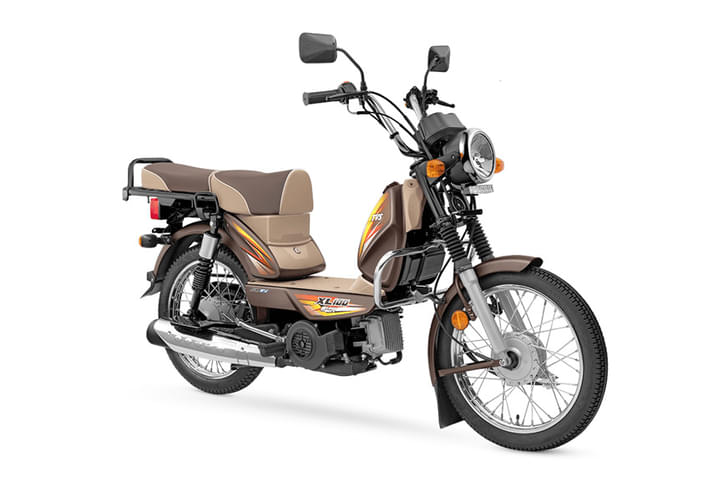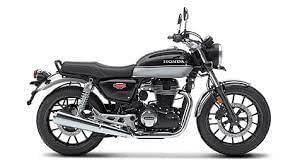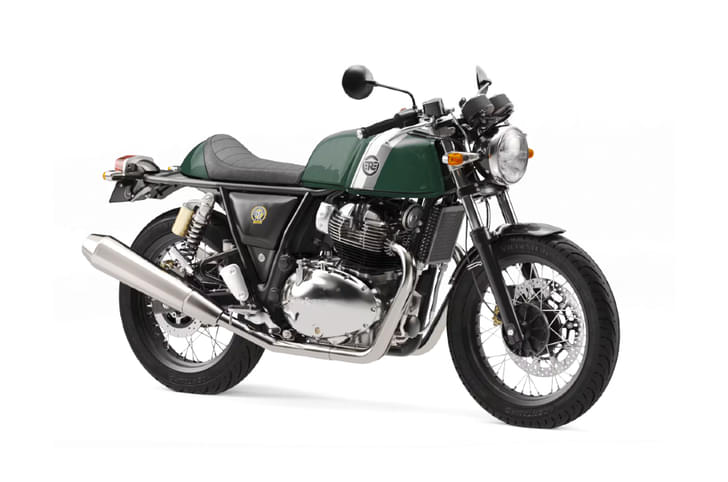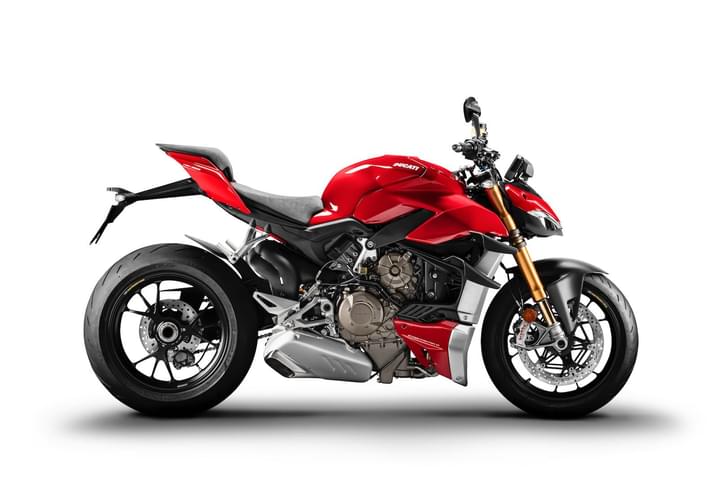To see two great competitors sparring has always led to an interesting turn of events, no? Whether it was Rossi vs Marquez, Niki Lauda vs James Hunt, or even motorcycle companies like TVS and Bajaj. These two Indian manufacturers have been at it in the 150cc-160cc space for years. For TVS, the Apache RTR 160 2V, despite being around for close to two decades, sells in numbers big enough to warrant a comprehensive update. And the timing of the said updates couldn’t have been better as it faces a formidable challenge from a brand-new 150cc Pulsar, one that is Bajaj’s best yet.
Bajaj Pulsar P150 vs TVS Apache RTR 160 2V: design and features
With the motorcycles parked side by side, you won’t need a second glance to tell which one is the older bike. The Apache’s design has largely remained unchanged, save for the new colours and graphics. This, along with the new LED headlight (that does a great job of illuminating a dark road) as well as the LED tail-light do their bit to uplift the appearance of the Apache. Personally, I like the way the TVS looks and a majority of people in the team agree.
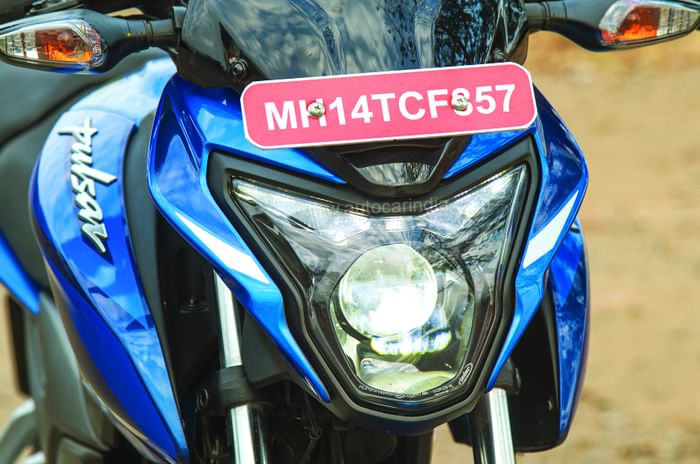
Shift your gaze to the Pulsar P150 and there are strong influences of its elder siblings, the N160 and N250 in its design. That’s not a bad thing and I’m of the opinion that the sleeker body panels of the new-age Pulsars look nice. What doesn’t look good, especially in the case of the P150, is the spindly fork and the skinny tyres. The sense of mass and proportion is lacking, the kind that we’ve seen in previous Pulsars.
The TVS also trumps Bajaj in the ‘who’s got the better features’ contest. With a full-digital display that gets Bluetooth connectivity, turn-by-turn navigation, and more, it is a whole lot more detailed than the Pulsar’s simpler, yet stylish analogue-digital unit. If that wasn’t enough, the TVS boasts of ride modes – Rain, Urban and Sport. These modes temper the power delivery as well as the peak outputs. In Sport mode, for instance, the peak power and torque are 16.04hp at 8,750rpm and 13.85Nm at 7,000rpm. Whereas in Urban/Rain mode, these figures drop to 13.32hp at 8,000rpm and 12.7Nm at 6,500rpm. Ride modes in a 160cc bike may seem useless to some, but, during the test, the benefits were apparent and we’ll get to that a little later. For now, the Apache is clearly leading, and there’s another area where it remains unbeaten.
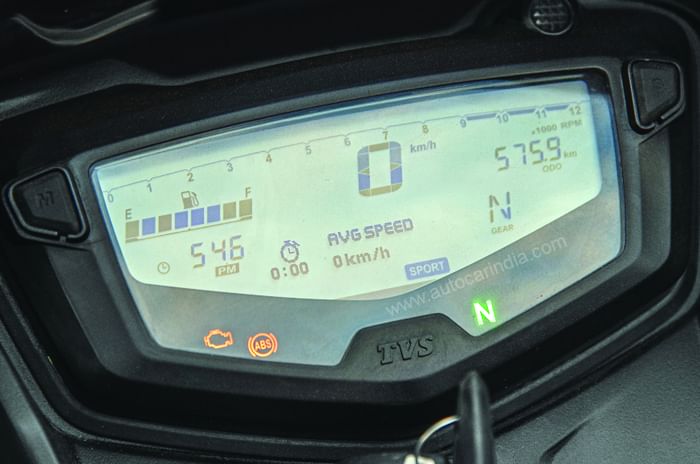
Bajaj Pulsar P150 vs TVS Apache RTR 160 2V: ergonomics
Hopping on the Apache, it is obvious that the company designed the bike for boy racers and not well-fed individuals or tall riders. The foot pegs are relatively high and rear set, the clip-ons are pulled more inwards than on the Pulsar and your knees foul with the fuel tank extension resulting in a cramped riding posture. Move to the Pulsar and its accommodating seat as well as its less committed riding posture makes it far more comfortable for daily commutes. But even the Pulsar has a more sporty position than what some might expect, and if you want comfort as a priority then the single disc P150 comes with a taller, flat handlebar and more comfortably placed foot pegs.
Bajaj Pulsar P150 vs TVS Apache RTR 160 2V: engine and fuel efficiency
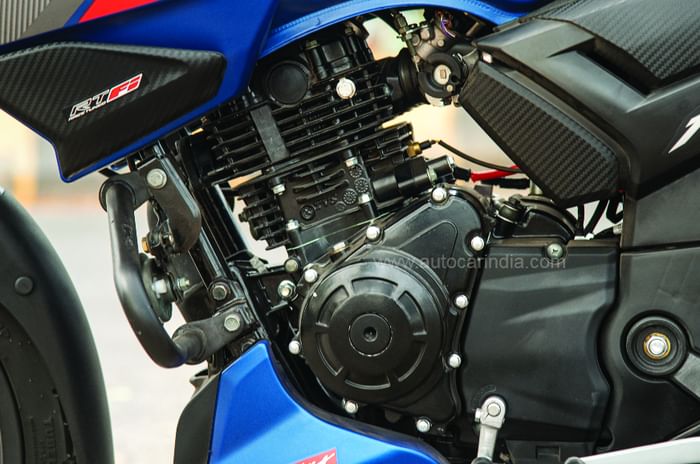
The Apache has the advantage on paper, be it in its engine’s power and torque outputs or its lower kerb weight, which is helpful when you pit it against the clock. Whether it’s the run from 60kph, 80kph or 100kph from standstill, the TVS is significantly quicker than the new Pulsar. In fact, it is over two seconds faster than the Pulsar to cross 100kph. Clearly then, there is no contest when it comes to performance, and I’m genuinely impressed with how quick the old TVS is. What didn’t impress me or anybody in the team was the amount of vibrations one feels in the mid to upper reaches of the rev range. It feels a little too harsh for this day and age, and leaves you with a tingling sensation in the hands and feet. These vibrations are the clearest indication of how old this Apache is.
| Performance and fuel efficiency | ||
|---|---|---|
| Bajaj Pulsar P150 | TVS Apache RTR 160 2V | |
| ACCELERATION | ||
| 0-60kph | 6.33s | 4.8s |
| 0-100kph | 21.13s | 17.37s |
| ROLL-ON ACCELERATION | ||
| 20-50kph (2nd gear) | 3.37s | 3.05s |
| 30-70kph (3rd gear) | 6.34s | 5.88s |
| 50-80kph (4th gear) | 6.76s | 6.37s |
| BRAKING | ||
| 60-0kph | 16.90m | 19.76m |
| FUEL EFFICIENCY | ||
| City | 43.41kpl | 53.1kpl (Urban)/48.5kpl (Sport) |
| Highway | 48kpl | 46.44kpl (Sport) |
In complete contrast, the Pulsar’s engine is beautifully refined, no matter where the rev needle is sitting at. It is also a super tractable engine, and there were times I could ride lazily at 5-6kph in second gear without a hiccup. Pulling a quick overtake while riding in said manner only required a twist of the throttle. Needless to say, first gear was barely called upon even while riding in Mumbai’s horrendous traffic. Commuting with this engine is a pleasure.
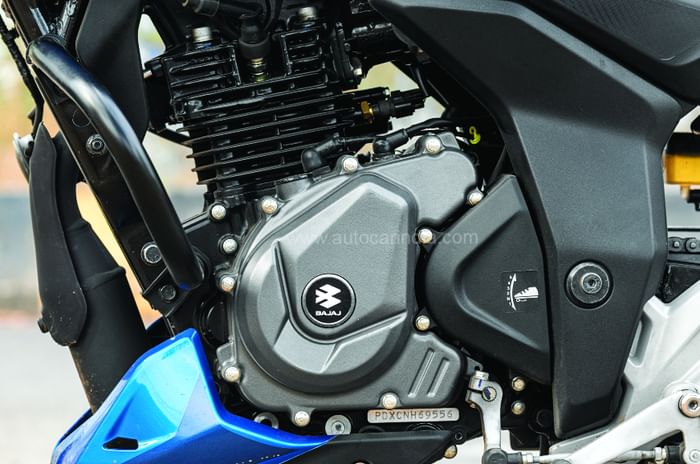
The Apache’s engine is also pretty tractable, but what came as a pleasant surprise is the kind of fuel efficiency it offers. Riding the bike in Sport mode, the TVS returned 46.44kpl on the highway and 48.5kpl in the city. Switching to Urban mode raised the fuel economy in the city to 53.1kpl, which is quite impressive. In comparison, the Pulsar only managed 43.41kpl in the urban environment and 48kpl on the open highway.
Bajaj Pulsar P150 vs TVS Apache RTR 160 2V: ride and handling
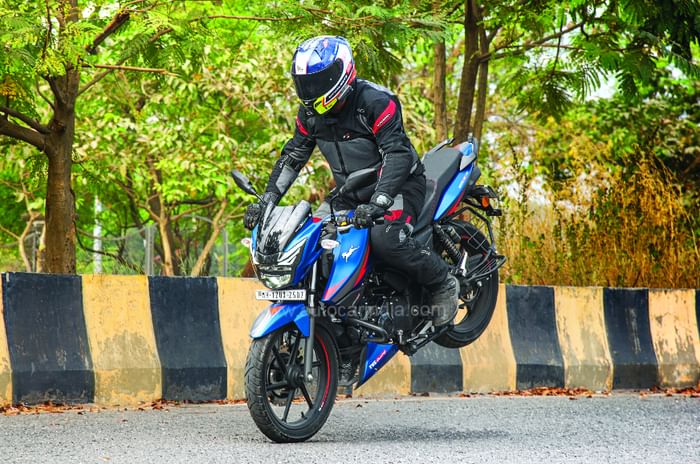
The Apache’s compact dimensions and smaller wheelbase make it a super effective tool to cut in and out of traffic. I loved its highly flickable handling, and it was a similar story when I rode the bike through a set of corners. The bike’s Remora tyres, with their grip and feedback also helped boost confidence in the bike. On the flip side, the TVS’ short wheelbase does make the bike twitch a little over bumpy highways at triple-digit speeds and high-speed stability is not a strong point. The Pulsar, meanwhile, at similar speeds and roads, feels much more planted and confident – its longer wheelbase helps matters. And, in what is a huge departure from previous Pulsar 150s, the P150 is notably easier to flick in and out of corners and its handling has improved significantly. It isn’t as entertaining as the TVS, but it is close.
Where the Bajaj steals another valuable point from the TVS is in the effortless way it irons out bumps and potholes. The Apache’s ride quality is decent, but the front end was quite soft, to the point where it bottoms out when hitting sharp-edged bumps or aggressive speed breakers. The Pulsar also has a better braking system, both in terms of bite as well as feedback from the lever.
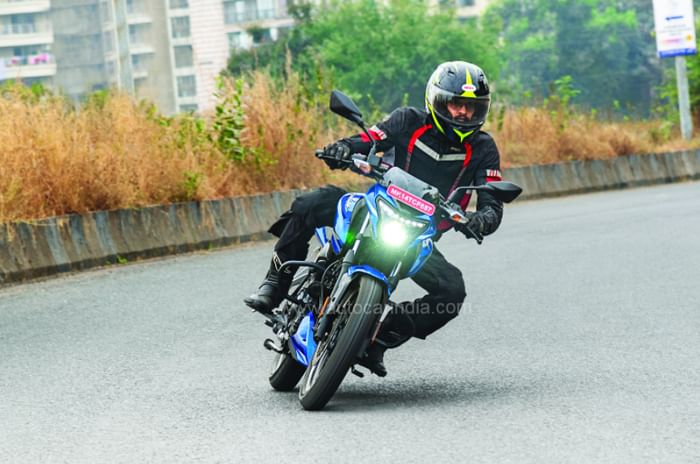
Bajaj Pulsar P150 vs TVS Apache RTR 160 2V: verdict
The Apache RTR 160 2V, despite being such an old bike, still manages to plaster a grin on people’s faces, including mine. I think an important reason for it is that it is one of the fastest, most agile bikes in the segment. It also beats the Pulsar P150 when it comes to performance, features and more importantly, fuel economy. But as good as it is, there are a few things about the Apache that make it hard to recommend.
At a starting price of Rs 1.17 lakh, going up to Rs 1.24 lakh for the top-end variant we’ve got on test, it sits quite close to the Apache RTR 160 4V that’s priced between Rs 1.21 lakh-1.30 lakh. The 4V is a vastly superior motorcycle in terms of refinement, comfort and dynamics.
You can’t really blame TVS for keeping this bike alive because it’s what the market wants. But put the Pulsar P150 in the picture, and you can’t shake the feeling that the Apache is outdated despite the styling refresh and features. To add to that, the Pulsar’s superb engine refinement, more impressive chassis and comfort levels make it the nicer bike to ride in nearly every situation. With its price tag of Rs 1.16 lakh-1.19 lakh serving as the cherry on top, the Pulsar P150 emerged as our clear winner.
| Specifications | ||
|---|---|---|
| Bajaj Pulsar P150 | TVS Apache RTR 160 2V | |
| Rating | 8/10 | 7/10 |
| Price (ex-showroom, Delhi) | Rs 1.16 lakh-1.19 lakh | Rs 1.17 lakh-1.24 lakh |
| Engine | 149.68cc, single-cylinder, air-cooled | 159.7cc, single-cylinder, air-cooled |
| Power | 14.5hp at 8500rpm | 16.04hp at 8750rpm |
| Torque | 13.5Nm at 6000rpm | 13.85Nm at 7000rpm |
| Power to weight | 103.57hp/tonne | 116.23hp/tonne |
| Wheelbase | 1352mm | 1300mm |
| Kerb weight | 140kg | 138kg |
| Seat height | 790mm | 790mm |
| Fuel tank | 14 litres | 12 litres |
| Front suspension | Telescopic fork | Telescopic fork |
| Rear suspension | Monoshock | Twin shock absorbers |
| Front brake | 260mm disc | 270mm disc |
| Rear brake | 230mm disc | 200mm disc |
| Tyre size (front) | 90/90-17 | 90/90-17 |
| Tyre size (rear) | 110/80-17 | 120/70-17 |



